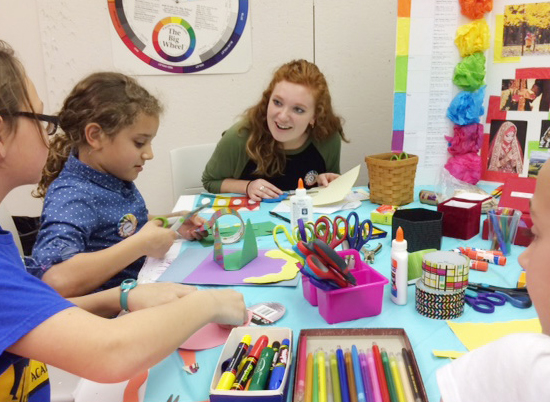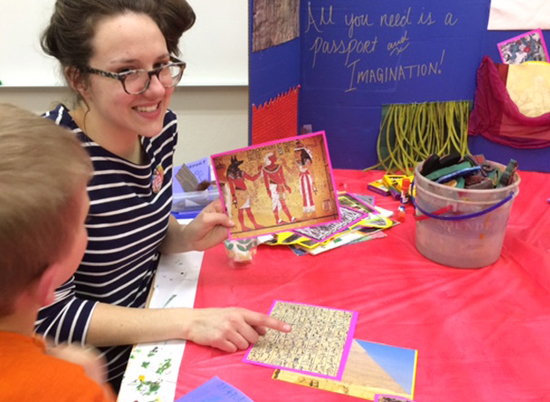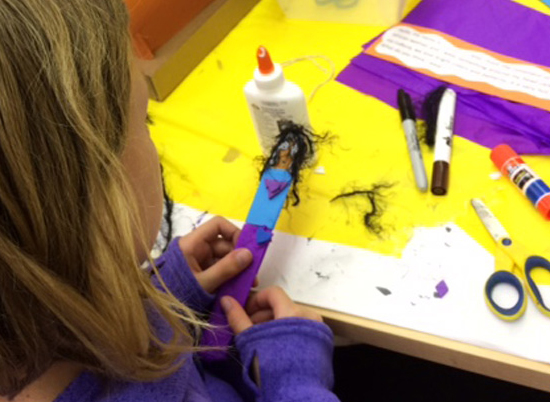Teachers for a night: Aspiring educators learn creative teaching strategies
Aspiring educators learn creative teaching strategies
"So many of our grade schools have a limited amount of art or no art at all; this class encourages our teachers-to-be with strategies for bringing creativity and art into their classrooms."
Deb Heerman
Assistant Professor, Art & Graphic Design
After weeks of setting objectives, planning lessons and creating activity stations, students in Deb Heerman's Art Methods for Educators put their lessons to the test. They invited 22 students from local elementary schools to the art classrooms for mutual learning sessions.
The Mount Mary students, most of whom were early childhood education majors, were assigned the task of creating learning stations that employ art as a means to learning another subject, such as math, history, science or language arts while also introducing aspects of cultures from around the world.
The results? Creative exploration, problem solving, world animal puppets, passports to texture and "all about me" banners.
"The art is a means to help motivate the learning and bring the subject and concepts to life," explained Heermans, an assistant professor in the School of Arts and Design.
At each station, youth were visibly engaged in the activity at hand, creating art, listening to stories and answering questions while they worked. This week, half of the student teachers led the activities while the other half observed the interactions. Next week, the student teachers will switch roles between teacher and observer. At the conclusion of the program, a reception for participating families will be held to display the creative works and allow the children and the teachers the opportunity to share what they learned.
This student-centered approach to learning is designed to hand over ownership of learning, from teacher to student.
"This type of environment encourages a child to explore and discover," Heermans said.
Hind Hamdy, a junior in early childhood education, was pleasantly surprised by the level of engagement she saw in the youth during the first session. She was impressed by the amount of discussion that naturally occurred during the lesson she was observing.
"It's interesting seeing them absorb all of the material," she said.
Next week, Hamdy will lead a cultural exploration of jewelry to help teach math skills while also sharing the symbolism behind early Egyptian jewelry.
Teaching aspiring educators how to infuse their lessons with creativity is both an objective of the University's creative campus and response to an increasing lack of presence of art in schools, Heermans said.
"So many of our grade schools have a limited amount of art or no art at all; this class encourages our teachers-to-be with strategies for bringing creativity and art into their classrooms."




